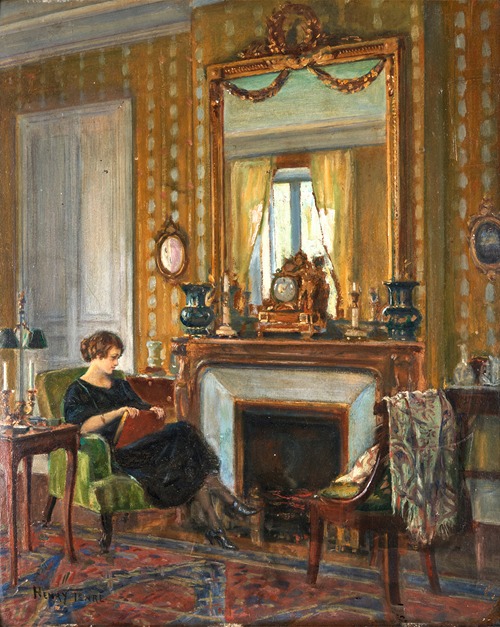

Henry Tenré received a solid training in Gustave Boulanger and Jules Lefebvre’s studio at the Julian Academy from 1875 to 1885. Then he studied under the multi-medallist landscape painter Edmond Yon. As a member of the Société du Salon des Artistes Français, he exhibited from 1883 to his death.
Henry Tenré was renowned for his large decorative landscapes, his interior scenes of intimate atmosphere (Jacques Doucet’s mansion rue Spontini), theatrical performances and portraits of the high society (Princess Georges de Radziwill, The baroness Gustave de Rothschild, Mrs H. Machiels, Miss de Thézillat). The great variety of his painting was rewarded during his lifetime. He received an honorable mention at the Paris Salon of 1891 and a third class medal for his contribution at the 1900 Great Exhibition.
During this major event, Henry Tenré was appointed Turkey's special delegate. He also participated in the organization of a retrospective exhibition of furniture and costume at the pavilion of the city of Paris. He lent many personal objects dating from the Second Empire, testifying of the links between his wife’s family and the French imperial couple. He and his wife offered the portrait of their grandmother Claire Émilie Mac Donell, vicomtesse Aguado marquise de Las Marismas and lady-in-waiting to Empress Eugénie painted by Franz Xaver Winterhalter to the Palace of Versailles in 1919.
In 1900, Henry Tenré exhibited his paintings and watercolors in the French section of the Fine Arts, showing his virtuoso techniques. As a reward for his exceptional participation during the 1900 Great Exhibition, he was named Knight of the Legion of Honor.Henry Tenré was an unmissable exhibitor at the Paris Salons in vogue at the time. He exhibited assiduously at the Salons of the Société des Artistes Français, of the Société des Aquarellistes Français, and on occasion, at the Salon d’Automne and at the Salon des Artistes Décorateurs. Many personal exhibitions were organized at Georges Petit’s Gallery in Paris. His paintings were exhibited in Brussels, in Toulouse, in Versailles, in Strasbourg.
Finally, he obtained a 2nd class medal at the end of the 1911 Salon de la Société des Artistes Français. Art-critics spoke highly of his works. Their articles still highlight today the role and the regularity of the description of the Palace of Versailles and of its garden in Tenré’s painting from 1898 to his death, in particular the report written by art-critic Georges Denoinville. Henry Tenré chose the Palace of Versailles and its gardens as the centerpiece in his painting, as evidenced by the triptych he exhibited at the Salon of the Société des Artistes Français in 1909 (no. 1687).He used large-format canvases to better depict the layout of the pools and of the alleys designed by the great architect André Le Nôtre for King Louis XIV.

